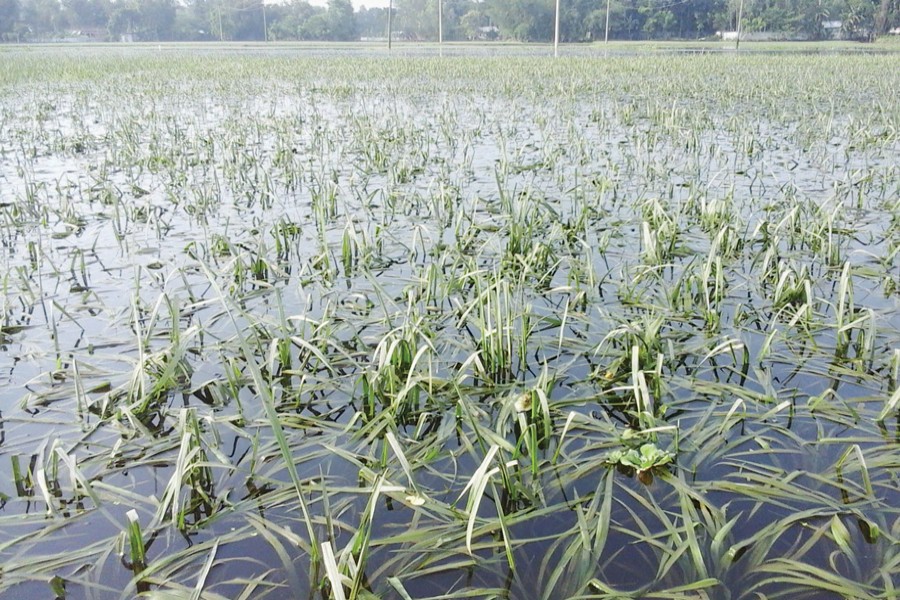
Published :
Updated :

Another spell of flood this year has inundated more than 70,000 hectares of paddy fields across the country in the last three weeks, raising further woes of Aman farmers in 21 districts.
Though floodwater of some major rivers - excluding the Teesta - has started receding, stagnant water is yet to be removed from the crop fields, thus posing threat of damage to standing crops, said insiders.
The government has targeted to produce an all-time high of 15.3 million tonnes of rice from nearly 5.8 million hectares of land in the Aman season this year. The country witnessed production fall of 1.3 million tonnes than the target in last Aman season amid five spells of flood in more than 35 districts.
Of the targeted 5.8 million hectares of acreage this year, 95 per cent has been achieved until September 06, Mizanur Rahman, deputy director (monitoring and evaluation) at the Department of Agricultural Extension (DAE), told the FE.
He said the intensity of flood is comparatively low this year. But heavy rain and upstream water caused flood in 21 districts so far, inundating transplanted seedlings in 70,000 hectares of land.
More lands might be flooded within a few days amid possibility of heavy rain in some states of the neighbouring country.
"But the final report on total and partial damages of Aman and other crops could be known after receding of water."
If water removes quickly from the lands, it would be useful. But three to four weeks of inundation might seriously hamper production, he added.
Value chain expert and agricultural economist Prof Golam Hafeez Kennedy said heavy flood and possibility of fall in Aman production played a key role in the rocketing rice price trend since August last year.
Delay in reveling data on loss and damage of crops also forced the government to enact its rice import policy much later. It battered the commoners during the pandemic, as rice prices fuelled up in the domestic market.
Prof Kennedy opined that this year the government gave rice import permission much earlier, which was appreciable.
In the last few years, Aman season led the rice production growth, as Boro output remained almost static.
"So, a fall in Aman production can entirely hurt the total rice supply chain across the year."
He urged the government to introduce flood-prone and other disaster-tolerant rice varieties for Aman season following frequent spells of flood in the country almost every year. Rice prices, however, are static in the retail markets for the last two weeks due to the government's easing of its import.
Coarse varieties of rice were sold at Tk 48-50 a kg, medium varieties at Tk 54-58 a kg, and finer varieties at Tk 64-78 a kg in the city's retail markets.
Meanwhile, the Flood Forecasting and Warning Centre (FFWC) in its forecast said major rivers of the country was in a falling trend, which might continue for the next two days. But the Teesta River at Dalia Point in Nilphamari might swell further within a day.
Flood condition in Sirajganj, Pabna, Manikganj, Rajbari, Faridpur, Munshiganj and Shariatpur districts might improve, while it might remain static in Nilphamari, Kurigram, Gaibandha, Jamalpur, Netrakona, Sunamganj and Sylhet districts.
Seven rivers in 16 points of the country were swelling 2.0 to 64 centimetres (cm) above the danger level on Tuesday, the agency added.


 For all latest news, follow The Financial Express Google News channel.
For all latest news, follow The Financial Express Google News channel.